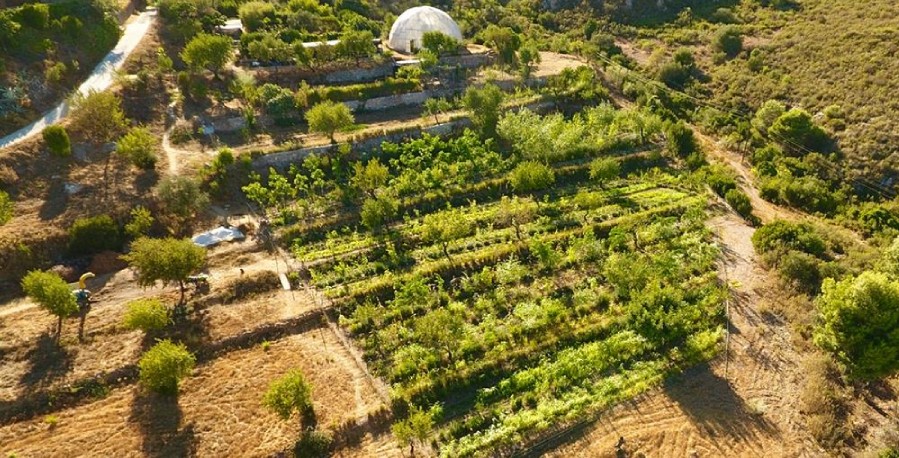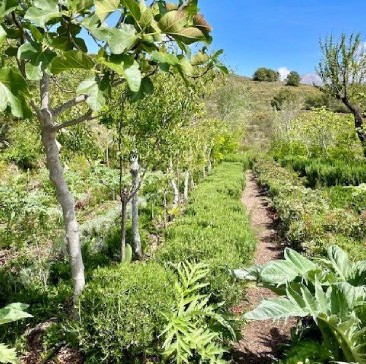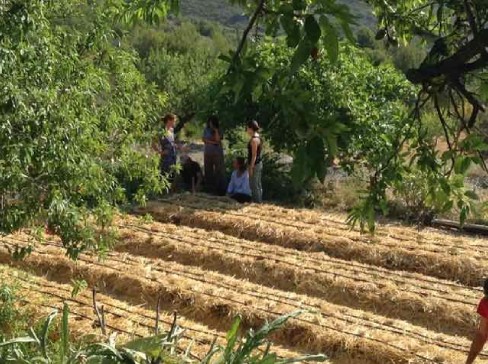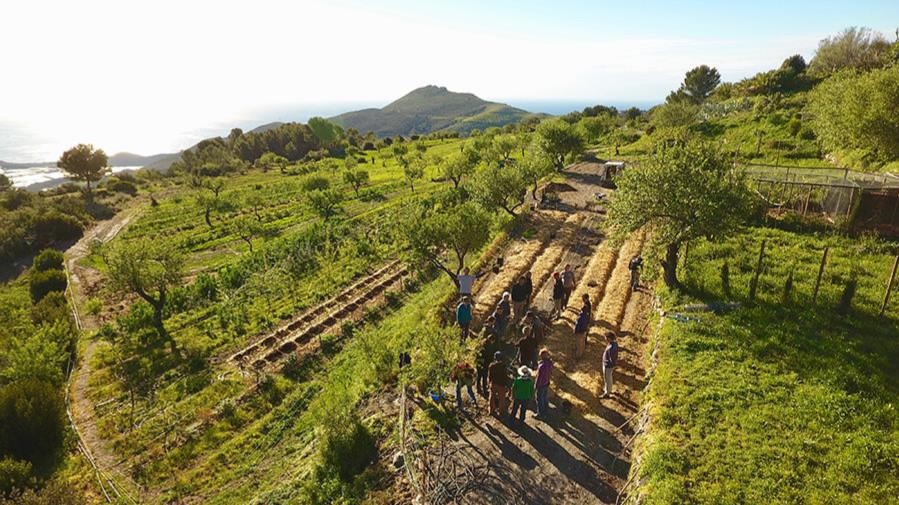
A La Loma Viva (Élő Domb) egy 15 hektáros, nonprofit alapítvány által működtetett farm Granada partvidékén, Dél-Spanyolországban. A Sierra Nevada lábánál található, ahonnan a Földközi-tengerre nyílik kilátás. A farm Ernst Gotsch szintropikus gazdálkodási módszerét alkalmazza mediterrán és félszáraz éghajlati környezetben.
Brazíliában Ernst sikeresen bebizonyította, hogy a leromlott területek helyreállíthatók bőséges, ételt biztosító erdős rendszerekké, amelyek számos ökológiai előnyt kínálnak. Ez a gazdálkodási módszer egy forradalmi megközelítés, amely a természetes folyamatokat felhasználva hoz létre „agrár-ökoszisztémákat”. Ennek a módszernek az alkalmazása révén a La Loma Viva farm talaja jelentős változáson ment keresztül, a vízigény csökkent, és egy valódi oázis jött létre, amely a száraz, leromlott tájban sokféle életformának biztosít élőhelyet. A La Loma Viva alapító tagja a TERRA hálózatnak, amely egy nemzetközi szintropikus gazdálkodást folytatókat összefogó csoport, amely magas színvonalú oktatási, tanácsadói és mentori szolgáltatásokat nyújt.


Sok farm és táj az évszázadokon át tartó, kizsákmányoló mezőgazdaság következtében jelentősen leromlott, kimerítve a talaj és az ökoszisztéma regenerálódó képességét. Az ilyen területeken először a rendszer egészségének helyreállítására kell összpontosítani, és csak ezután fog megjelenni a természetes bőség és termelékenység. A szintropikus gazdálkodás egy radikális megközelítés, amely arra tanít bennünket, hogy a földet élőlényként szemléljük, saját belső regeneráló képességgel. Ebben a rendszerben az emberi szerep az, hogy értelmes beavatkozásokkal segítsük ezt a regenerációt. Ennek érdekében különféle növények és fák sűrű, réteges ültetésével erdőszerű rendszereket hozunk létre, amelyek maximalizálják a fotoszintézist és a biomassza-termelést. Az ültetendő fajokat két alapelv szerint választjuk ki: a növények különböző térbeli rétegeinek elfoglalása (Tér), illetve a természetes szukcessziós folyamatok (Idő) figyelembevételével. Ez a tervezési módszer, amely szelektív metszést és gondozást is alkalmaz, regeneratív gazdálkodási stratégiát eredményez. Az így létrejövő agrárökoszisztéma nemcsak termelékeny és esztétikus, hanem számos hasznos terméket biztosít, mint élelmiszert, takarmányt, faanyagot és gyógynövényeket. Emellett alapvető ökoszisztéma-szolgáltatásokat is nyújt, például javítja a talaj állapotát, növeli a biodiverzitást és szabályozza a víz körforgását. Ily módon a leromlott területek erdősített farmokká alakíthatók, amelyek jelentős környezeti, társadalmi és gazdasági előnyöket kínálnak, és hozzájárulnak az éghajlatváltozás elleni küzdelemhez.

Homepage: http://www.lalomaviva.com/
e-mail: admin@laloma.com


